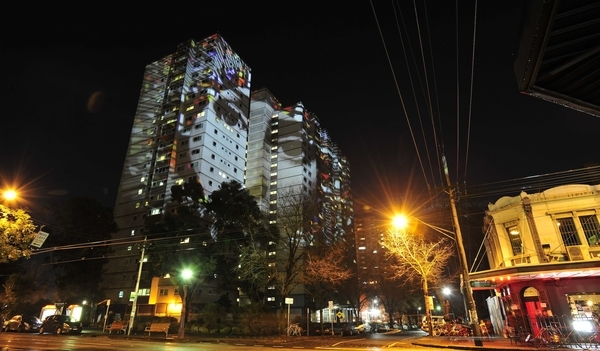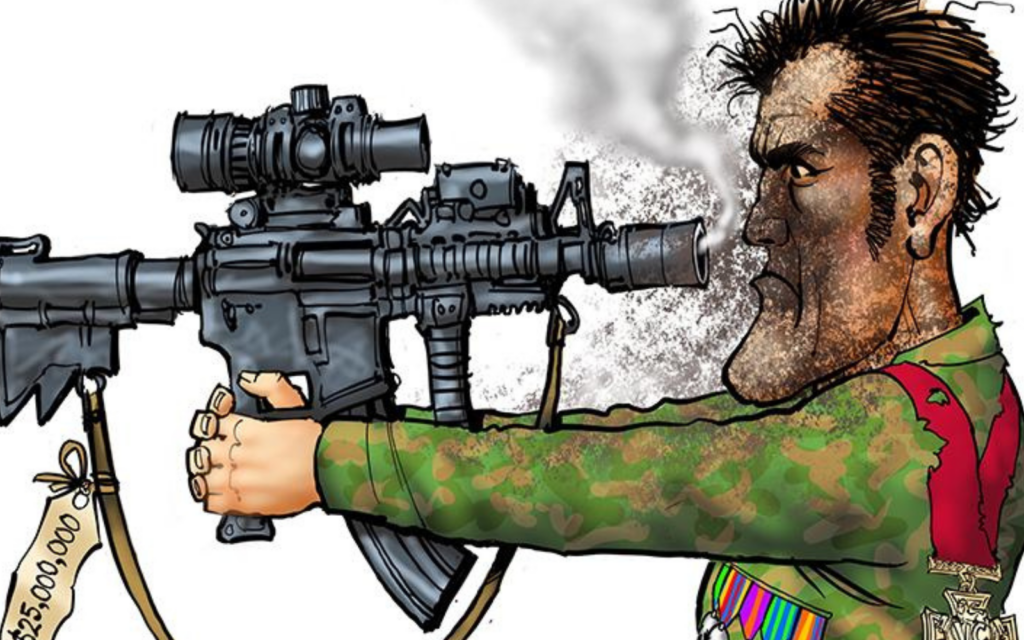The well-loved GSPF has grown to the point where they’ve been able to establish a mentoring program in 2015, something Pastore is very pleased about. “The festival gets bigger and brighter each year, literally. Our mentorship program features four mentors, artists who have worked with us in previous festivals. We’ve matched them with new artists with comparable talents so they inspire each other.” One happy pairing involves a digital artist mentoring an architecture student who’s also a resident of the commission flats in Gertrude Street, who will be working on a project involving projections onto the building where he lives.
As in previous years the Festival Hub is The Catfish bar, offering a late night space with free and ticketed events including live performances, workshops, panels and music as well as artworks. “We’ve got just under 40 installations on the street,” says Pastore. “There’s more in the hub at Catfish, featuring many different visual and digital artists. As well, The New Vanguard Exhibition of contemporary project work is on at the Seventh Gallery; that involves six different artists. One highly anticipated installation is by artist Chase Burns, who will be covering the Builders Arms Hotel with large crashing waves.”
The 2015 GSPF features more than digital and installation work, as Pastore tells us. “There’s a roving theatre performance, Wheel of Fate, in Atherton Gardens by Uprising Youth Theatre, and it’s like a game show where you choose your own backpack of projections which create stories and you can interact with different performers and move around the garden; you choose who and what story you want to follow. We’re encouraging people go further into the Atherton Gardens. There’s the Artbox Truck – a project by Artbox Curators, Yarra Youth Services and the Village Festival; it’s a man with a van, a mobile exhibition space, where you walk through to experience the installation.
“As we get bigger we’re able to engage a more diverse range of artists and do things that aren’t just about presenting artwork, “ Pastore continues. “We can offer workshops where participants can submit their own work to the festival, kind of like the festival feeding itself, with ideas and collaborations happening further down the road. People are beginning to understand how they can interact with the festival. It’s not just about highlighting organisations, we’re building community; we’re good at bringing people together, like the Artful Dodgers from the Youth Centre producing product for Charcoal Lane, the training restaurant for the indigenous community. The festival is beautiful, it’s aesthetically pleasing and it’s enriching the community: a simple way to bring community groups together. It’s a pleasure working with all the artists. It’s a nice atmosphere to be around.”
Digital festivals are huge in Europe; comparative festivals in Australia would be Vivid in Sydney and the massively attended White Night in Melbourne. Pastore is keen to see public awareness of digital art increase as the Gertrude Street festival grows. “People don’t really understand yet what the festival is capable of doing. The big challenge in pulling it together is that we’re a community of volunteers who have other jobs, so for us it’s about finding the time to dedicate to the Projection Festival. We’re passionate about the festival and we want to see it reach its full potential. We’re always limited by budgetary reasons and by where and when we can install, but it’s different every year. We’re open to a lot of possibilities. If someone comes to us with a project we can’t officially put in the programme, we can find a way to fit it in somehow, maybe project it one night. You can engage with this sort of art without having a program in front of you.”
Pastore sees the need for the festival to expand further. “The festival has moved on organically. We’re trying to branch out, and make links with other organisations, strengthen our partnerships, work collaboratively and run more events with different organisations, instead of focusing just on our own festival. We have our own projects outside the ten days of the festival exhibition: our festival curator, Yandell Walton, recently won Best in Show at Digital Graffiti in the USA.”
One thing Beat especially enjoys each year is coming across smaller installations in unexpected spots, projections that seem to have randomly popped up, which may actually be the case – such is the feeling of community ownership of the festival that even its organisers can be taken by surprise. “Some people turn up with their own projectors and exhibit,” says Pastore. “And they may or may not tell us that they’re going to do that. Someone might see something on the first Friday night that inspires them with an idea and they’ll come along on the second Friday night with their own installation.”
BY LIZA DEZFOULI







